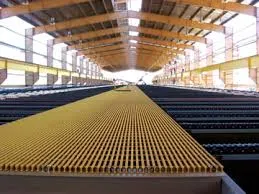
-
 Afrikaans
Afrikaans -
 Albanian
Albanian -
 Amharic
Amharic -
 Arabic
Arabic -
 Armenian
Armenian -
 Azerbaijani
Azerbaijani -
 Basque
Basque -
 Belarusian
Belarusian -
 Bengali
Bengali -
 Bosnian
Bosnian -
 Bulgarian
Bulgarian -
 Catalan
Catalan -
 Cebuano
Cebuano -
 China
China -
 China (Taiwan)
China (Taiwan) -
 Corsican
Corsican -
 Croatian
Croatian -
 Czech
Czech -
 Danish
Danish -
 Dutch
Dutch -
 English
English -
 Esperanto
Esperanto -
 Estonian
Estonian -
 Finnish
Finnish -
 French
French -
 Frisian
Frisian -
 Galician
Galician -
 Georgian
Georgian -
 German
German -
 Greek
Greek -
 Gujarati
Gujarati -
 Haitian Creole
Haitian Creole -
 hausa
hausa -
 hawaiian
hawaiian -
 Hebrew
Hebrew -
 Hindi
Hindi -
 Miao
Miao -
 Hungarian
Hungarian -
 Icelandic
Icelandic -
 igbo
igbo -
 Indonesian
Indonesian -
 irish
irish -
 Italian
Italian -
 Japanese
Japanese -
 Javanese
Javanese -
 Kannada
Kannada -
 kazakh
kazakh -
 Khmer
Khmer -
 Rwandese
Rwandese -
 Korean
Korean -
 Kurdish
Kurdish -
 Kyrgyz
Kyrgyz -
 Lao
Lao -
 Latin
Latin -
 Latvian
Latvian -
 Lithuanian
Lithuanian -
 Luxembourgish
Luxembourgish -
 Macedonian
Macedonian -
 Malgashi
Malgashi -
 Malay
Malay -
 Malayalam
Malayalam -
 Maltese
Maltese -
 Maori
Maori -
 Marathi
Marathi -
 Mongolian
Mongolian -
 Myanmar
Myanmar -
 Nepali
Nepali -
 Norwegian
Norwegian -
 Norwegian
Norwegian -
 Occitan
Occitan -
 Pashto
Pashto -
 Persian
Persian -
 Polish
Polish -
 Portuguese
Portuguese -
 Punjabi
Punjabi -
 Romanian
Romanian -
 Russian
Russian -
 Samoan
Samoan -
 Scottish Gaelic
Scottish Gaelic -
 Serbian
Serbian -
 Sesotho
Sesotho -
 Shona
Shona -
 Sindhi
Sindhi -
 Sinhala
Sinhala -
 Slovak
Slovak -
 Slovenian
Slovenian -
 Somali
Somali -
 Spanish
Spanish -
 Sundanese
Sundanese -
 Swahili
Swahili -
 Swedish
Swedish -
 Tagalog
Tagalog -
 Tajik
Tajik -
 Tamil
Tamil -
 Tatar
Tatar -
 Telugu
Telugu -
 Thai
Thai -
 Turkish
Turkish -
 Turkmen
Turkmen -
 Ukrainian
Ukrainian -
 Urdu
Urdu -
 Uighur
Uighur -
 Uzbek
Uzbek -
 Vietnamese
Vietnamese -
 Welsh
Welsh -
 Bantu
Bantu -
 Yiddish
Yiddish -
 Yoruba
Yoruba -
 Zulu
Zulu
frp cover
FRP covers, often overlooked as crucial components, play an essential role across numerous industries. Their inherent properties offer unparalleled benefits, making them exceptional alternatives to traditional materials like steel or concrete. Here, we uncover why FRP covers are increasingly gaining traction and how their qualities make them a preferred choice among professionals.

Foremost, FRP, or Fiberglass Reinforced Plastic, is recognized for its outstanding durability and corrosion resistance. Unlike metals, which can succumb to rust over time, FRP covers are impervious to corrosive elements, making them ideal for applications in water treatment facilities, chemical plants, and marine environments. This resilience translates to lower maintenance costs and longer life spans, affirming the material's reliability and efficiency.
Moreover, the lightweight nature of FRP covers is another substantial advantage. Weighing considerably less than metal covers, they ease the burden of installation and transportation, reducing overall project timelines and labor costs. This feature is particularly beneficial in retrofit projects where existing infrastructure may have weight limitations.

The customization capabilities of FRP covers are an aspect that cannot be overlooked. Manufacturers can tailor these covers to specific dimensional requirements, incorporate custom colors, and offer a variety of surface finishes. This versatility ensures that the covers meet the precise needs of different projects, whether for aesthetic purposes or specific functional demands.
From an expertise standpoint, understanding the specialized manufacturing process of FRP covers is crucial. They are constructed through a process called pultrusion, which involves pulling fibers through a resin to create highly uniform and structurally sound profiles. This method ensures that each cover meets stringent quality standards, promoting both safety and performance.
frp cover
The adherence to global standards and certifications further underlines the authoritativeness of FRP covers in industrial applications. They are tested rigorously to comply with ISO, ASTM, and other relevant standards, assuring stakeholders of their compliance with international safety and efficiency norms.
Trustworthiness is ingrained in the very use of FRP covers across critical sectors. Engineers and project managers emphasize their dependability in safeguarding valuable assets against environmental and operational stresses. Case studies from real-world applications further attest to their ability to withstand harsh conditions while maintaining structural integrity.
Incorporating real user experiences, several projects have reported heightened satisfaction due to fewer service interruptions and enhanced operational efficiency after switching to FRP covers. The feedback underscores not just the initial quality but also the long-term reliability, reinforcing industry trust.
Indeed, FRP covers are more than just functional components. They represent a strategic investment in sustainable and cost-effective solutions. Their growing adoption is not just a trend but a testament to their efficiency, proving indispensable in future-ready infrastructure development.
In conclusion, whether considering their unmatched durability, lightweight design, or conformity with global standards, FRP covers clearly exhibit a profound example of advanced material engineering meeting practical application needs. This combination of experience, expertise, authoritativeness, and trustworthiness makes them an asset that few can overlook in planning and executing significant industrial projects.









